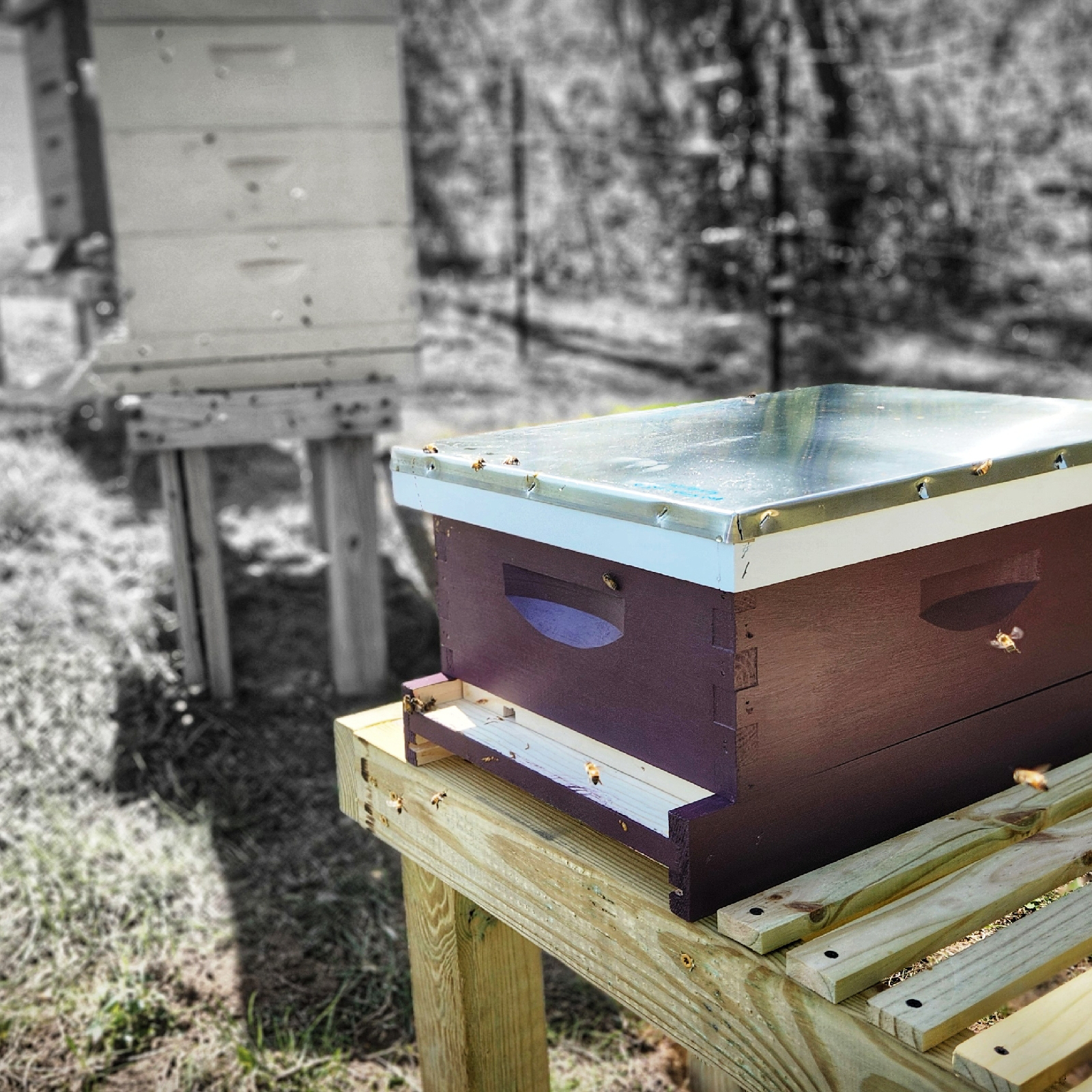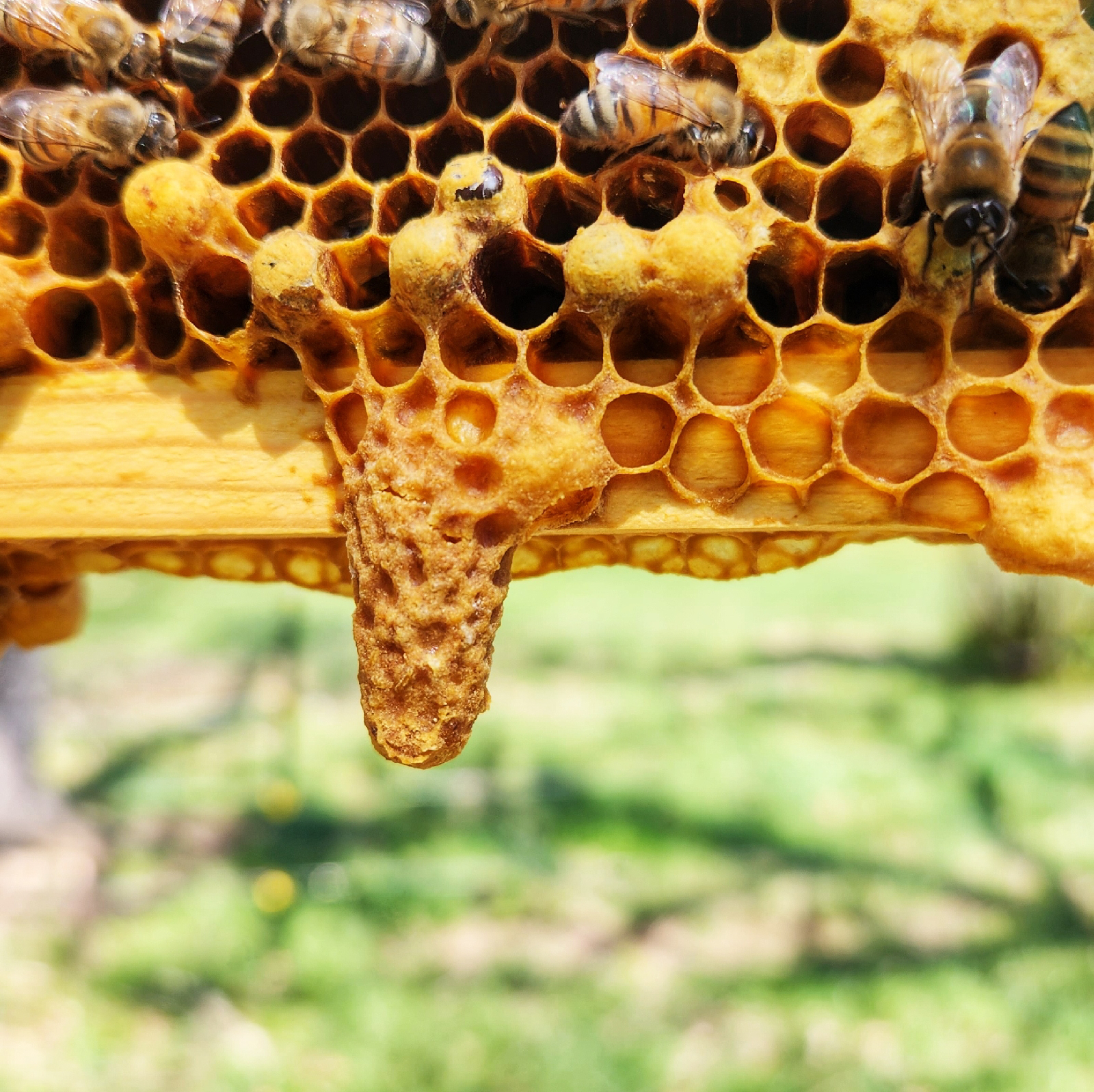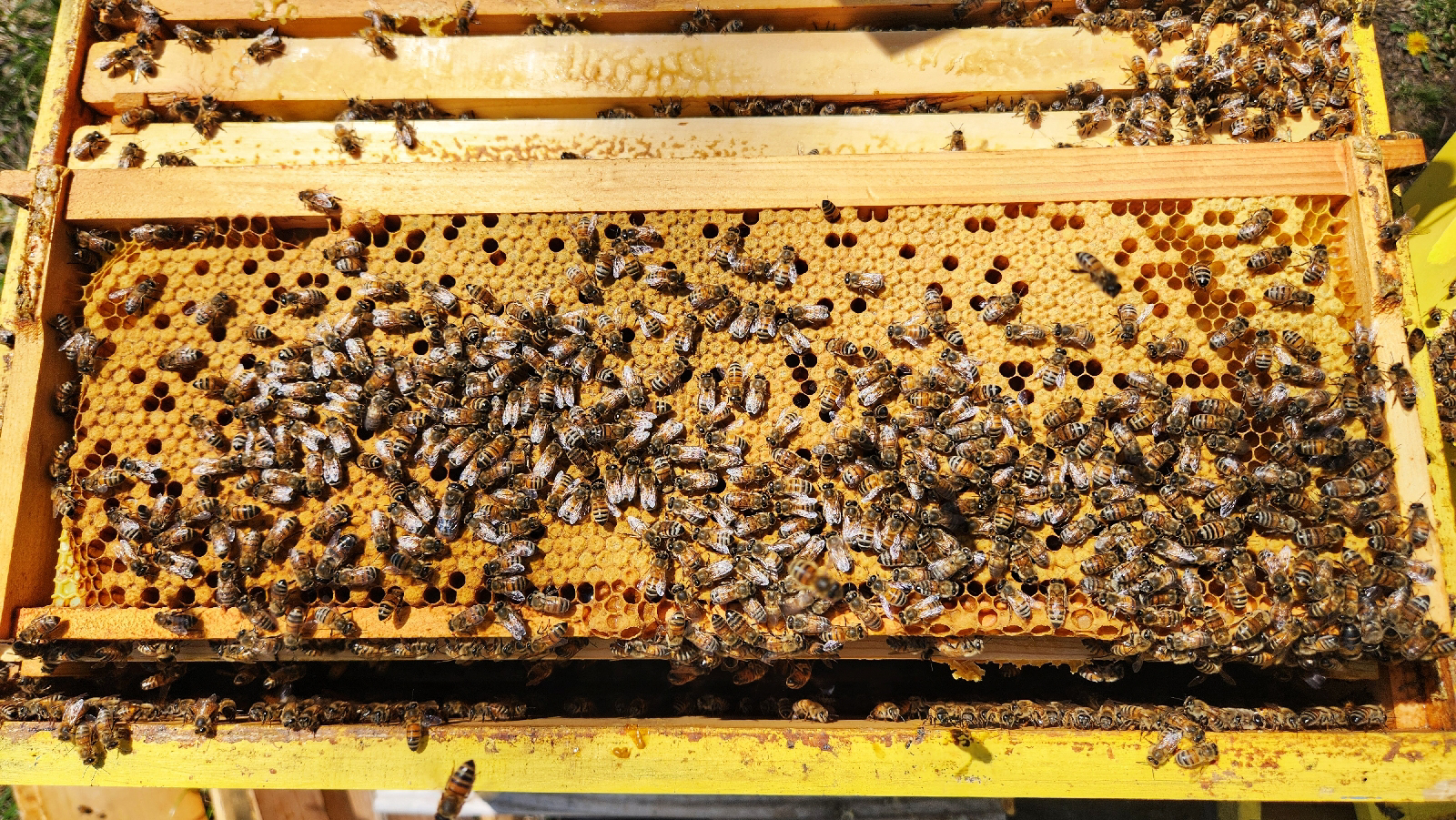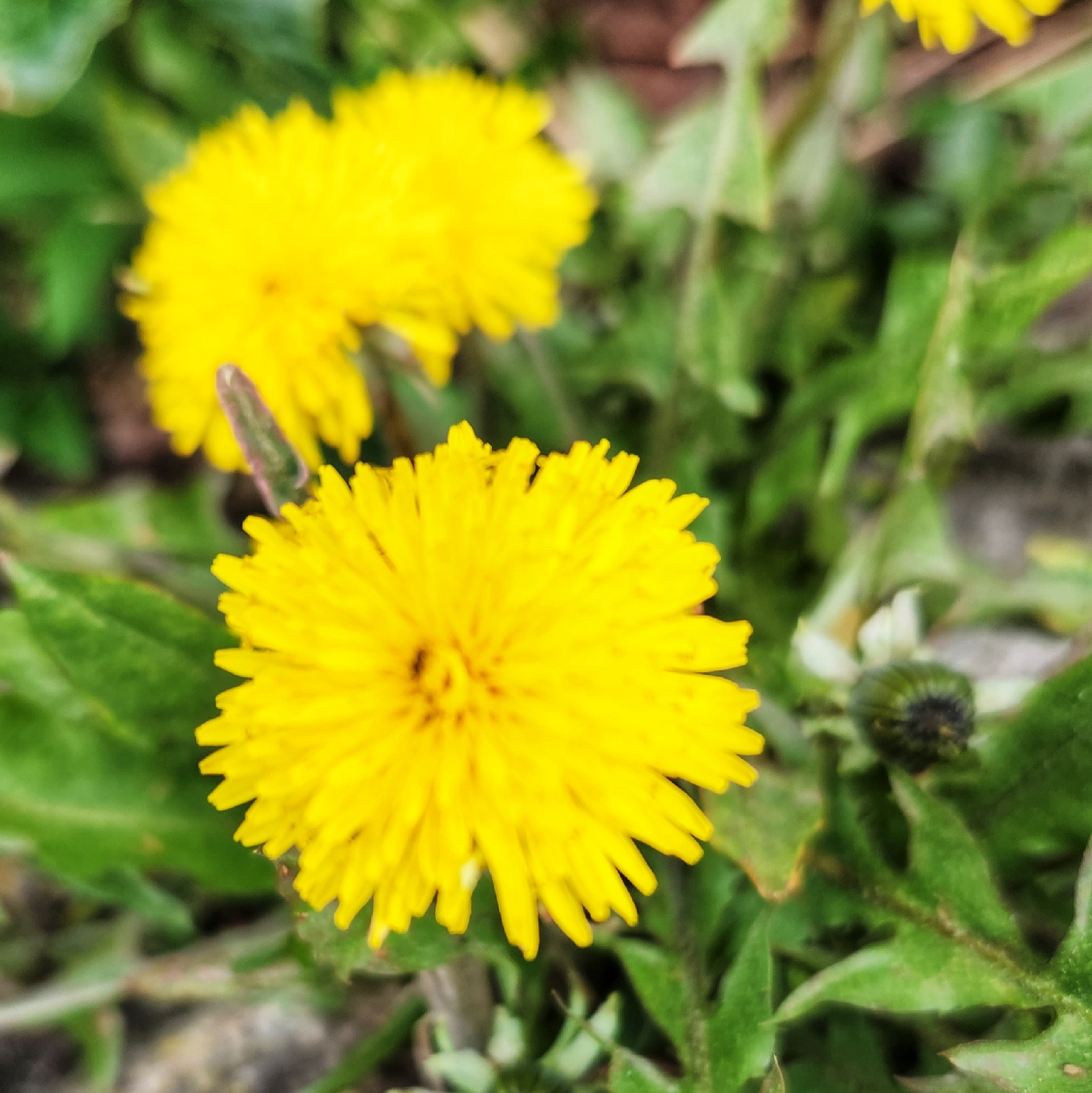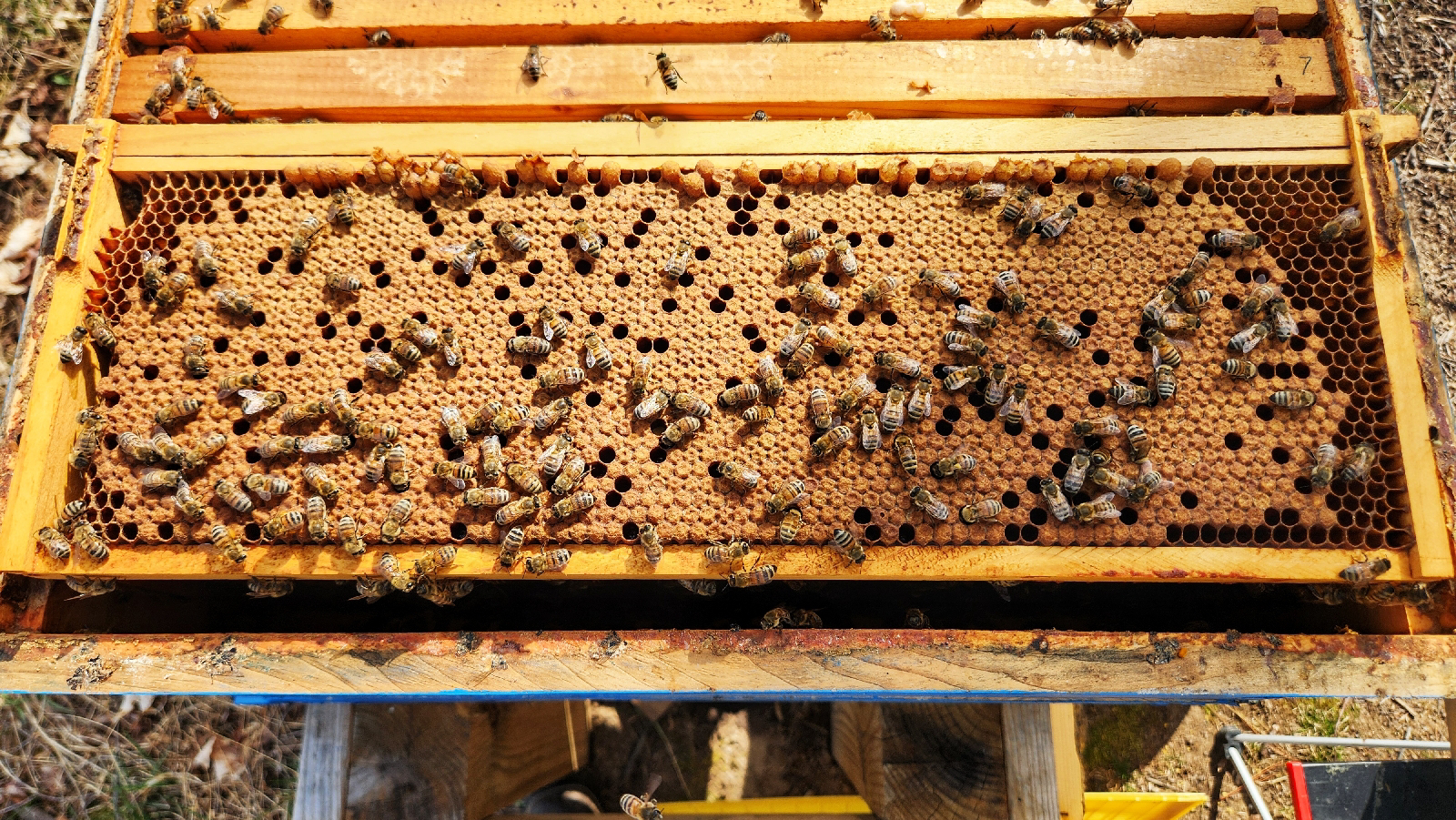After three days on a school trip to New York followed by a solid week of cold, drizzly weather, I checked out the hives today to find them pretty close to bursting at the seams!
Blue hive, in particular, worried me when I saw this big of a crowd outside the entrance this morning. That kind of behavior when the weather isn't hot can indicate the hive is spoiling for a swarm -- something they do when they feel like they're running out of space in the main hive. I've been worried about the exact scenario for the past week.
Sure enough, when I got into Blue hive, the girls had built something like a dozen peanut-shaped queen cells. They were hanging down from the bottom of the frames in the third box -- a sure sign of swarm prep. I destroyed most of them and move one frame with three queen cells to a new hive along with about 5 frames of bees, brood, and food. With luck, that will reduce the population stress in the Blue hive, give them some empty frames to build out and they'll start focusing on honey production.
Blue hive has loads of space lower down in the hive for the queen to lay, so it's odd that they were feeling the need to swarm. One possible solution would be to reverse the hive boxes -- put the empty bottom box on top and the upper box on the bottom. It's a controversial method of management, but it might trick them into thinking they have space.
The other option for any of these hives as they get full of bees is the Demaree split -- essentially to divide the hive in two, isolating the queen with plenty of empty cells to lay in while the rest of the bees continue to harvest nectar and honey like normal. I haven't tried it yet and I've used all my built-buyt-empty frames for the moment, so it's likely I won't be able to try that method as I had planned.
Orange was the new pollen color this week -- most likely from the dandelions that are popping up everywhere after last week's rain. As much as lawn lovers hate dandelions, bees love them. They're a major source of nectar and protein in the spring.
The queens are all laying amazingly well. They're young and full of life (literally) and it's not unusual these days to see frames that have brood from one side to the other. The one exception is Periwinkle hive, which seems to be having a flare-up of chalkbrood again. The disease is caused by a fungus that destroys the nascent bees before they can mature. I found several frames with shriveled larvae that had turned black. I pulled those frames to avoid spreading the disease more than necessary.
After making a split out of the White hive two weeks ago, I started another new hive -- the Khaki hive until I come up with a better name -- by pulling queen cells, brood and food from the Blue hive. With luck, the new queen will emerge there in a few days and start building that hive. If she's anything like her mother, she'll be prolific!











